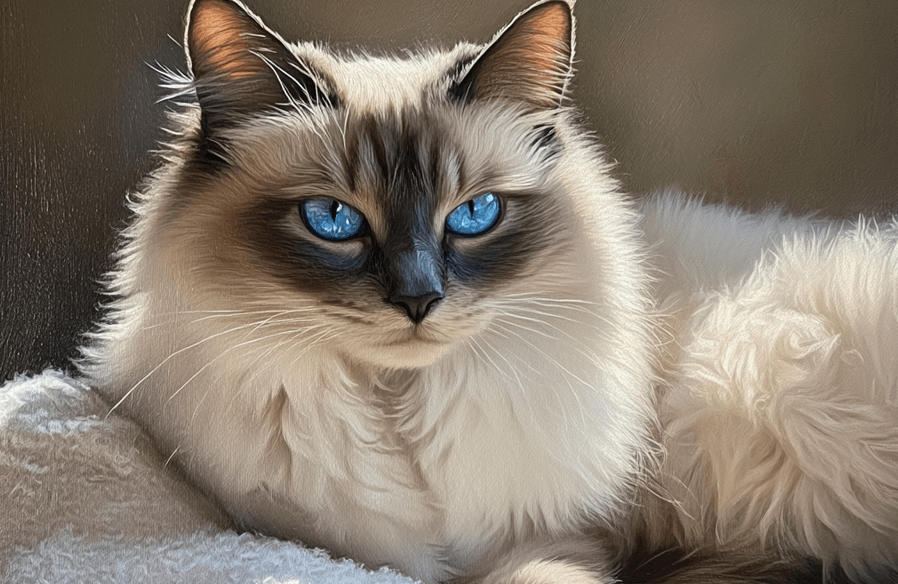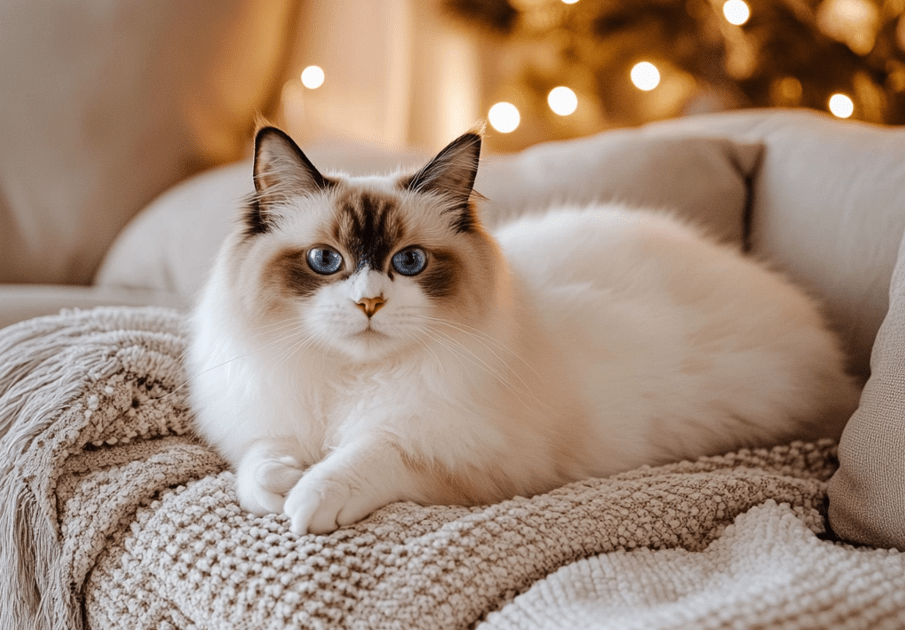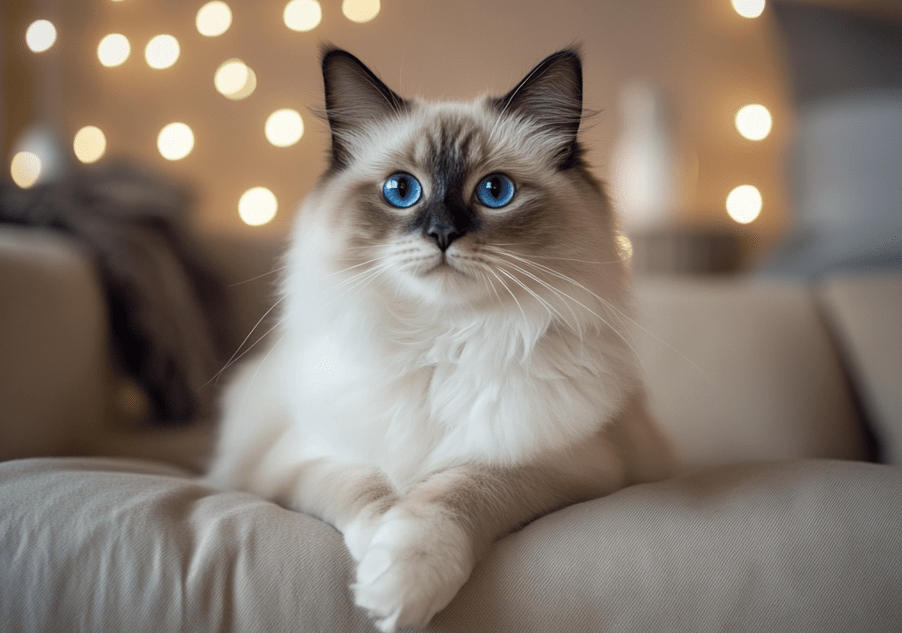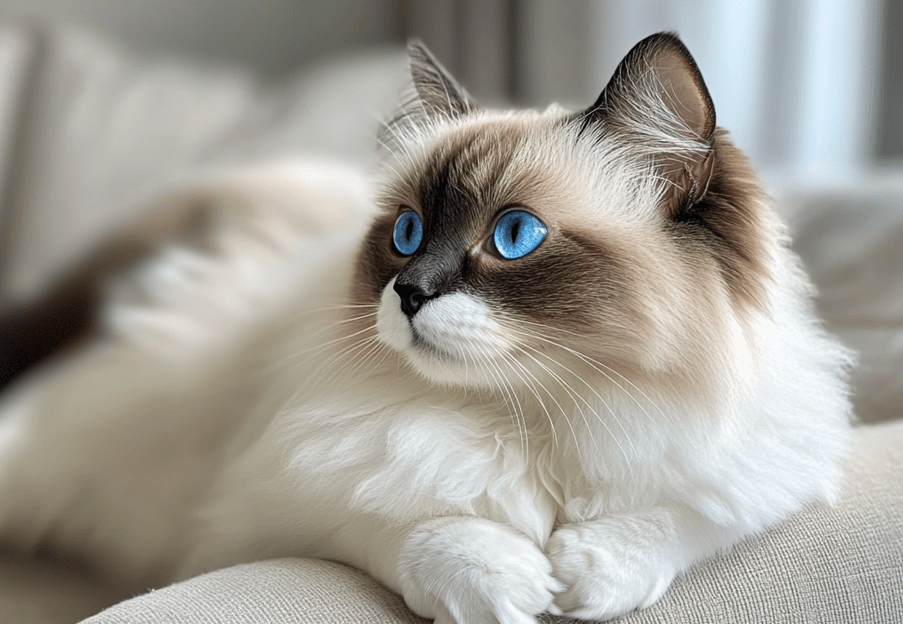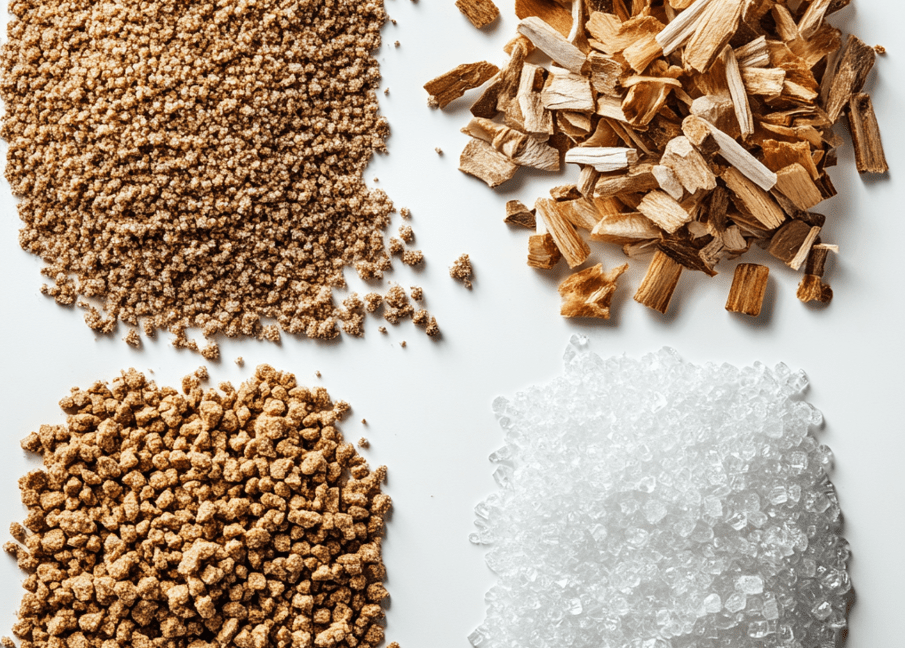
Selecting the best cat litter for Ragdoll cats is an important step in keeping their beautiful coats clean and providing you with a comfortable, odor-free home. There are generally three different types of cat litter you can find in stores: Wood and paper-based products, silica, and clay (which often comes in two varieties — clumping and non-clumping). Each type has its own pros and cons, allowing cat owners to determine what works best for themselves and their pets. I will be discussing types of cat litter that we have used or have experience with. I will also explain why we are sticking with our original option, why it works for us and our home and cat.
Best Litter Box for Ragdoll Cats: Key Features to Look For
In this section, we’ll explore the best litter box for Ragdoll cats and the key features you should look for. When selecting a litter box for long-haired cats, it’s important to focus on size and comfort. Since Ragdolls are large, the litter box should be spacious enough to accommodate their size comfortably. Additionally, you’ll want to choose a litter box for cats that is easy to clean, as Ragdolls can be quite particular about their hygiene. Features like high sides to prevent litter from being kicked out and a low entrance for easy access are essential for best odor control for Ragdoll cats.
Ragdolls tend to prefer privacy, so selecting a litter box that’s placed in a quiet corner of the house can enhance their comfort. A large litter box for cats is essential to ensure your Ragdoll has plenty of space to move around.
Clumping Clay Cat Litter
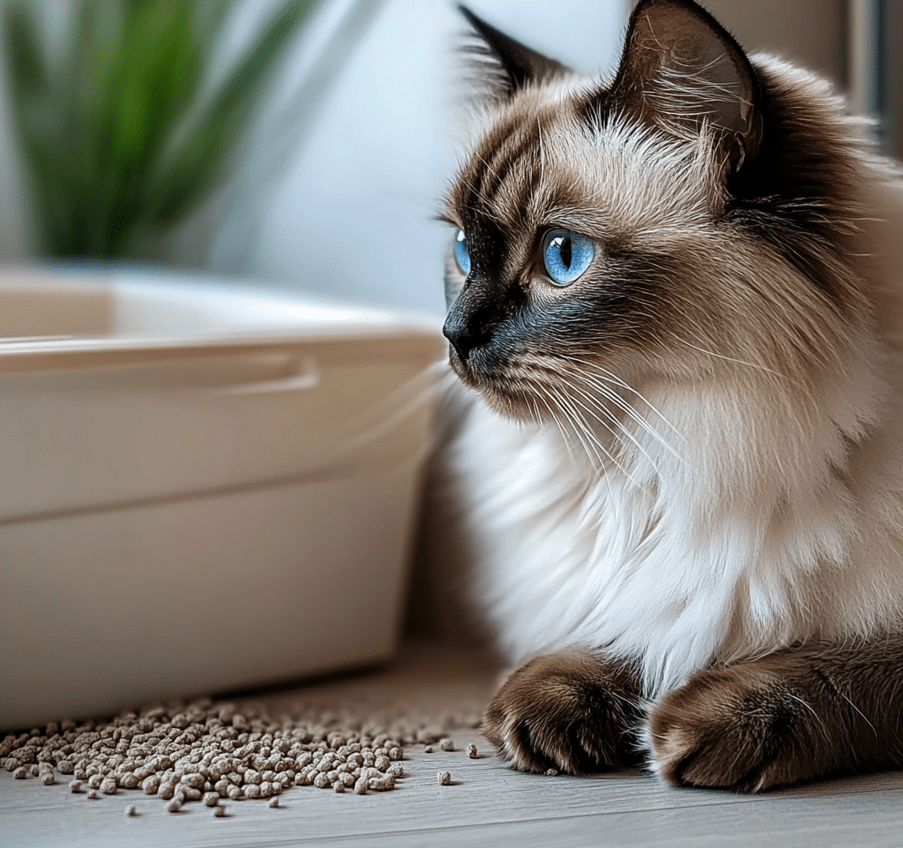
Clumping clay cat litter is not normally recommended, particularly if you have kittens. That means it usually contains quartz silica and sodium bentonite, both of which are dangerous substances if your kittens, or any cats, ingest them. Even small amounts can cause digestive distress.
When clumping litter absorbs moisture, it can grow up to 15 times its initial size. A kitten eating one of these materials can get severely sick and with intestinal blockage. Though this risk is associated with ingestion, kittens are naturally curious, so this litter should not be used around them.
Also, according to the experience of working with veterinarians and in catteries, clumping clay litter sticks to cats’ paws. This may leave litter around the house, which is a cleaning nightmare. For long haired breeds, like Ragdolls, litter can get stuck in their paw fur, potentially causing them discomfort.
In fact, one of the benefits of clumping cat litter is its great ability to absorb moisture that makes it easier to remove soiled litter. Non-clumping varieties, by contrast, are not as absorbent.
Pros:
1.Less expensive than most other kinds of cat litter
2.Clumps when wet making it easier to clean
3.Doesn’t require frequent changes of the entire litter box
Cons:
1.May contain silica dust and can be harmful if ingested
2.Unsafe for Kittens Less Than 4 Months Old
3.It gets stuck to cats’ paws and travels around the house
4.Not eco–friendly and not good for the environment to produce.
5.Can make the home dirty as they track litter around
Non-Clumping Clay Cat Litter
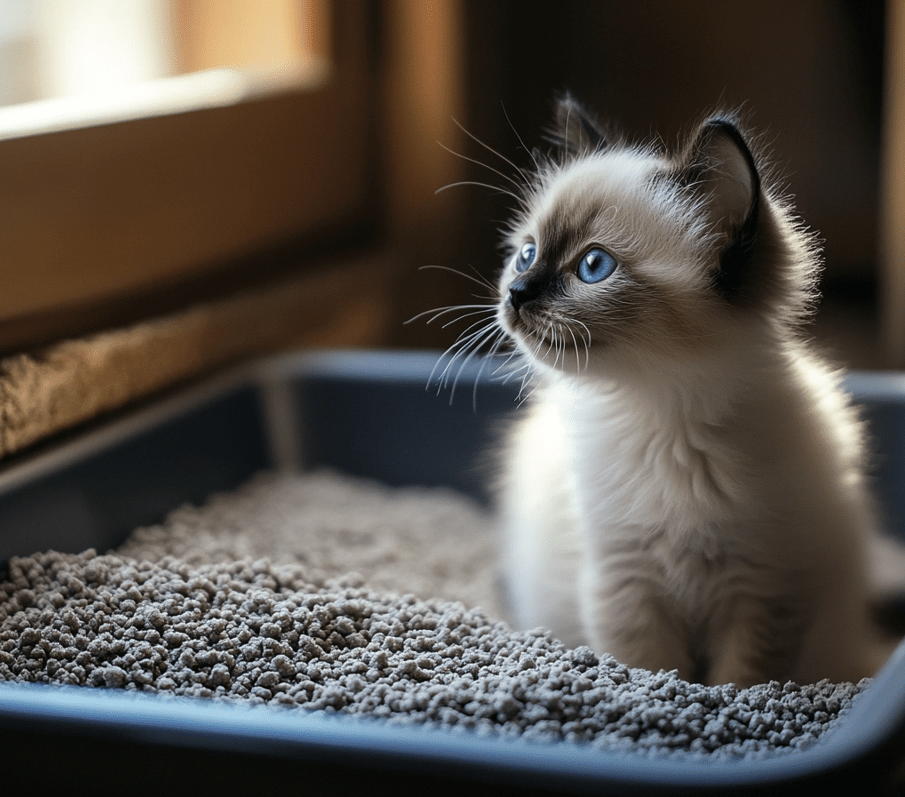
Non-clumping clay cat litter doesn’t swell when ingested, as clumping litter does, so it’s less likely to cause problems if a curious kitty eats some. But I do not use on growing kitties. The tiny bits can still be ingested and may lead to health problems because some brands contain toxic products. Most non-clumping clay litters also contain silica dust, which can be hazardous to young kittens. It’s my experience that this kind of litter is dusty as well. So I avoid clay-based litter altogether.
Another downside is that clay cat litter is not biodegradable. That means it contributes to landfill waste and remains in the environment for eternity. I won’t name any brands, but you’ll find these products by looking for “non-clumping clay litter” on the labels.
Pros:
1.Typically less expensive than other types of litter
2.Highly absorbent
Cons:
1.Possibly toxic when swallowed because of the presence of silica dust
2.Not recommended for kittens under 4 months old
3.It can get stuck to paws and bother them
4.Polystyrene is non-biodegradable and this is responsible for environmental waste.
5.Production process that harms the environment
6.It quickly develops odors so requires frequent complete tray changes
7.Easily tracked around the house
Silica Gel Litter
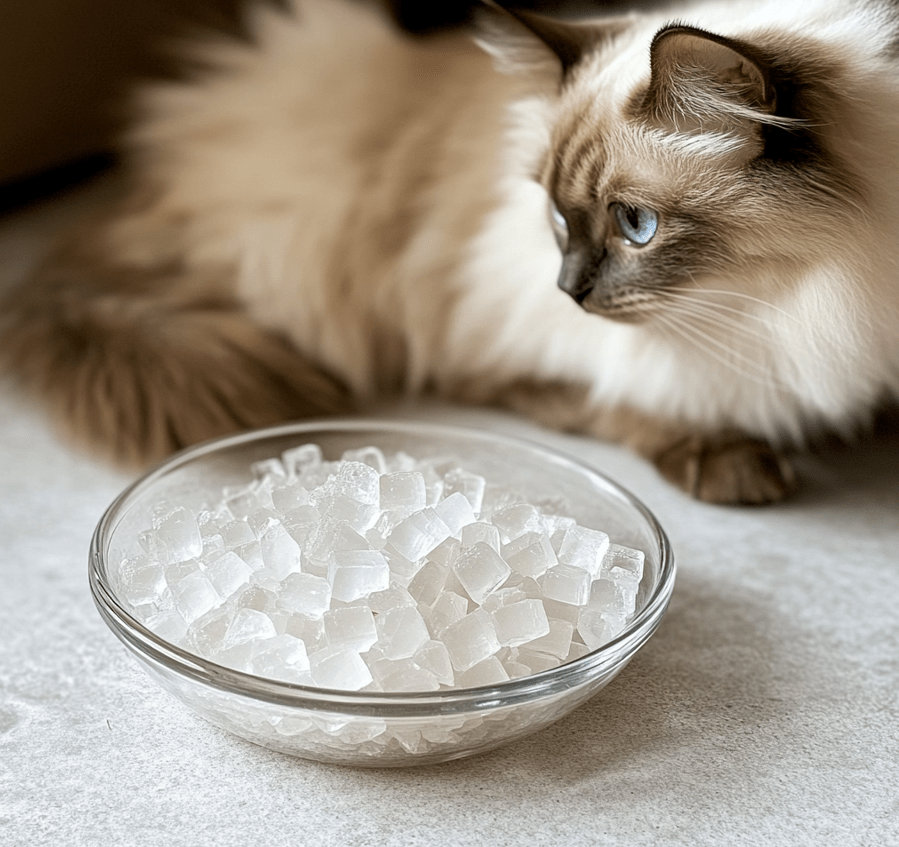
Unlike clay litter, silica gel (also known as crystal cat litter) is non-toxic, and is therefore safe for both cats and humans. It’s constructed of silica gel, but has none of the crystalline silica you hear about, the bad dust that clays have. It is made of non-toxic amorphous silica instead, so it is less toxic.
It is important to ensure that the product lists only amorphous silica gel in its ingredients, as this type is considered safe for cats, including newborn kittens. However, ingesting it is still not safe and can cause intestinal blockages. When kittens are around, I don’t use silica gel litter because of its tiny granules. That said, I’m fine using it for adult cats who are fully litter trained and less likely to eat litter.
While silica gel litter can still be tracked and scattered about the home, its non-clumping nature makes it less likely to cling to a kitty’s paws than other types. Lightweight, controls odors well, easy to clean
Pros:
1.Non-toxic and safe for cats
2.Highly absorbent
3.Produces minimal dust
4.Easy to handle and lightweight
5.Demand less litter box changes
Cons:
1.Manufacturing process that is harmful to the environment
2.Higher price compared to other litters
3.Can spread throughout the home
4.Not biodegradable
5.Can be uncomfortable for sensitive-pawed cats
6.May release dust that is a known carcinogen
Paper Litter
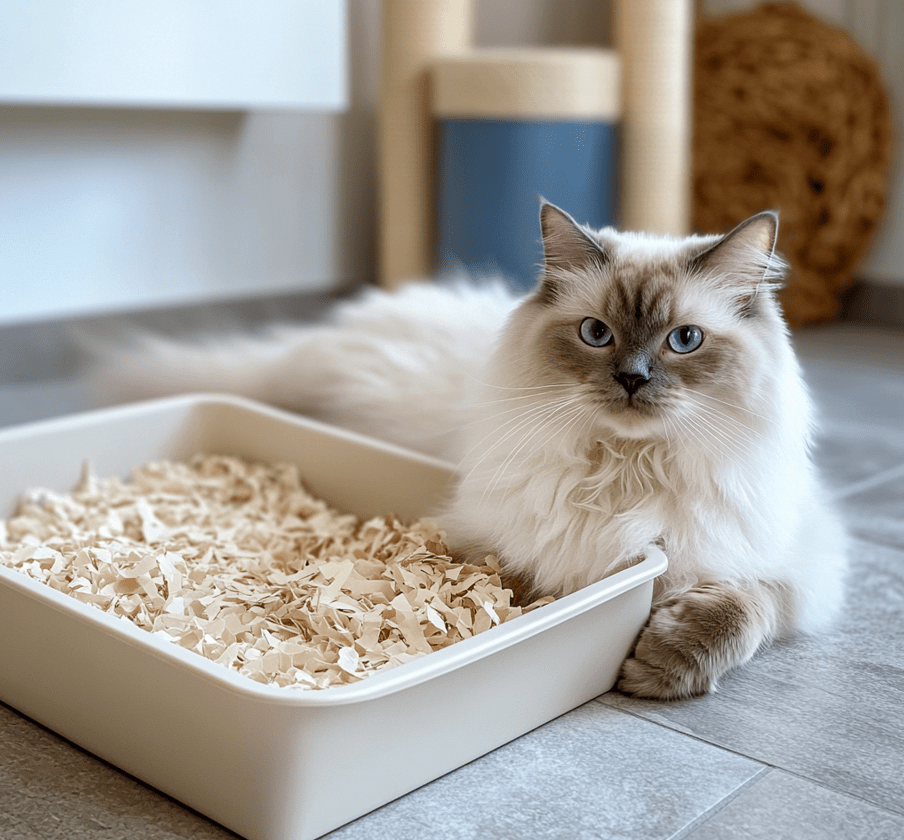
Made of 95% post-consumer recycled paper, paper litter is biodegradable and eco-friendly. It has a soft texture that makes it ideal for senior cats or cats with sensitive paws, and its resemblance to clay makes it a good transitional litter. It does not clump, but does swell a little when wet. That said, kittens will often try to eat this litter, which isn’t as good for young cats. It generates no dust and has no traditional “litter smell,” but its odor absorption ability is less than that of silica gel crystals, meaning it must be replaced more frequently.
Pros:
1.Cost-effective option
2.Recyclable and environmentally friendly
3.Perfect for long-haired kittens as it doesn’t stick to fur or paws
Cons:
1.Non-clumping, lower absorbency
2.Requires more frequent litter tray changes
Best Cat Litter for Ragdolls: Wood Pellet Litter
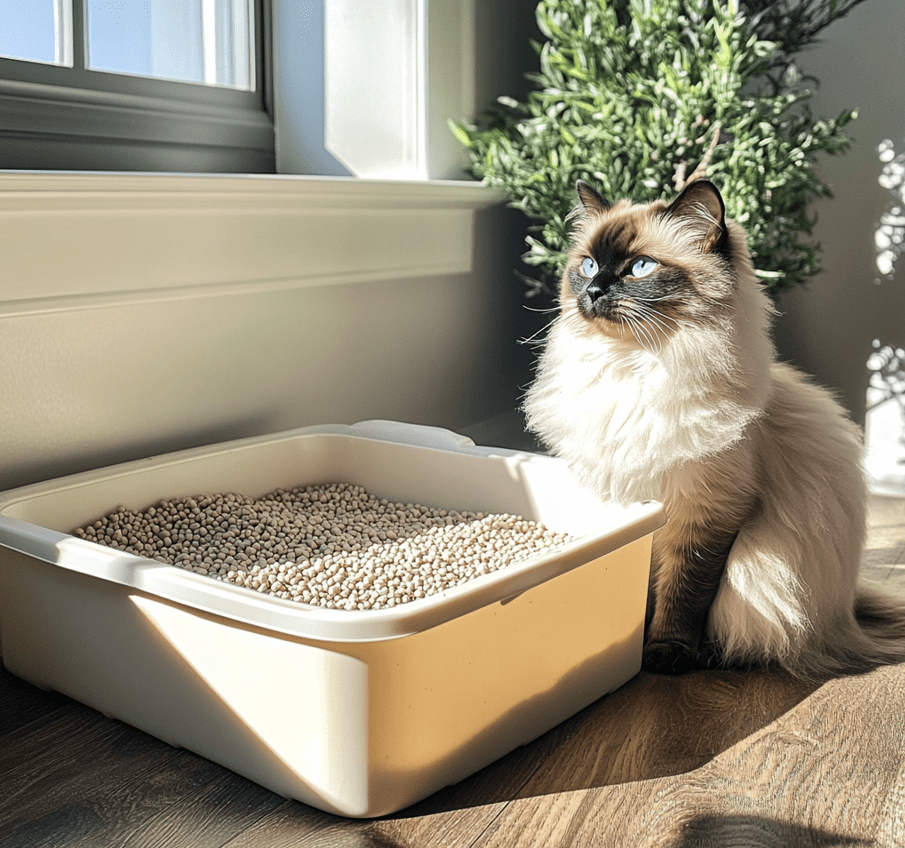
If you are looking for a very good litter option from the available choices for your Ragdoll cat, wood pellets would be a great choice. There’s no need to go with a specific brand — any big bag from your local pet store works, and buying locally also supports small businesses. It comes in a larger pellet size that prevents kittens from attempting to eat it while they’re learning to use the litter box. Cats may kick the pellets out of the box when digging, but they are easy to clean up and don’t bind to the hair in between cats’ toes, so they won’t track it around the house. It also creates no dust, which keeps the surrounding cleaner.
Because this litter doesn’t clump, cleaning out urine can be more difficult. Instead of just scooping parts of the litter it’s normally better to replace all of it. You should change the litter once a day but may have to do so more often if you have several cats. If you scoop solid waste out promptly, the litter doesn’t smell very much, even after heavy use. This litter is made from 100% wood, so it is renewable, biodegradable, and eco-friendly. New kitten owners are often given a bag of this litter and directions on where to find more. You can also combine this litter with other brands to ease your cat into trying a new one if you have to.
Pros:
1.Odor is naturally controlled, without artificial additives
2.Its large pellets are easy to clean
3.Great for long-haired cats — no sticking to the fur or paws
4.Material that is sustainable, renewable and biodegradable
5.Cheap and in abundant supply
6.Able to work for kittens because of the larger pellet size
Cons:
1.Can be harsh on soft paws at the beginning
2.Not clumping, need to change litter more frequently
Why Wood Pellet Litter is the Best Choice for Ragdoll Cats
Choosing the best litter box for Ragdoll cats also depends on the type of litter used. Wood pellet litter is an excellent option for long-haired breeds like Ragdolls. It’s highly absorbent and prevents litter from sticking to their fur and paws. Wood pellet litter is gentle on sensitive paws and doesn’t create a mess around the house, making it perfect for Ragdoll cat litter box setup.
In addition to being comfortable, wood pellet litter is eco-friendly and biodegradable, making it an ideal choice for environmentally-conscious pet owners. As it doesn’t track like traditional clay-based litter, it helps with best odor control for Ragdoll cats and maintains a clean environment with minimal effort.
Tips for Maintaining the Best Litter Box for Ragdoll Cats
Maintaining the best litter box for Ragdoll cats requires regular care and proper cleaning. For long-haired cats like Ragdolls, the box should be cleaned more frequently to avoid litter sticking to their fur. Make sure you scoop solid waste daily to keep the litter box fresh. For non-clumping options like wood pellet litter, replacing the litter completely more often will help in keeping odors at bay.
If you’re looking for cat litter box cleaning tips, make sure to choose a litter box for long-haired cats that is easy to clean and has high sides to reduce litter spillage. A comfortable, clean, and well-maintained litter box will encourage your Ragdoll to use it consistently, ensuring a happy and healthy pet.

